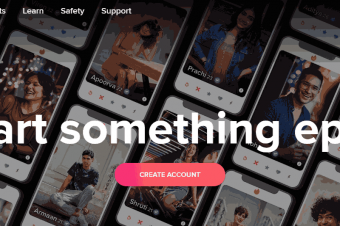Learn Oracle Sql
Tags: Oracle SQL
Your first step to become an Oracle SQL Developer
Last updated 2022-01-10 | 4.2
- Write SQL Queries to interact with Oracle Databases- Become a Database Developer
- Develop codes using Oracle SQL
What you'll learn
* Requirements
* Basic knowledge in using Computers* Strong motivation to learn
Description
About This Course:
Welcome to the course, Learn Oracle SQL.
This course introduces Oracle SQL to its students. Anyone who is interested in getting into Oracle SQL Development may use this course to learn Oracle SQL.
This is a free course with considerable amount of video lectures to not only introduce Oracle SQL to you, but also to take you much deeper into Database Development.
The idea is to introduce SQL to you with less hassle. So you may just want to watch the videos, get yourself familiar with the SQL language and advance to another Oracle SQL course created by the same author.
That course is: The Complete Oracle SQL Course For Beginners
About SQL:
SQL is used to interact with Database Systems. As per ANSI (American National Standards Institute), SQL is the standard language for Relational Database Management Systems.
SQL has been the prominent language to interact with various Database Systems for many decades. While many languages that existed two decades ago are extinct now, SQL has always maintained its supremacy in the RDBMS world. Over the time, it has only advanced with new features and standards. And it seems to stay that way for years to come.
About the Instructor:
The instructor of this course, Mr.Sam Dhanasekaran, has more than 20 years of IT experience. It predominantly includes Database Support, IT Support and Recruiting.
Who this course is for:
- Anyone who wants to learn Oracle SQL Development
- This SQL course is for beginners who would like to learn about SQL syntax and get into SQL Development. No prior programming knowledge is needed.
- College Students can take this course to understand SQL and Oracle Database Fundamentals
Course content
14 sections • 81 lectures
Introduction Preview 05:10
This lecture introduces this course to its students
Installing Oracle 12c in Windows 10 Preview 12:11
How to download Oracle 12c software from Oracle's Website and install it in you Windows PC or a Windows Laptop.
Using SQL Developer Preview 02:11
This lecture explains about how to connect to a Oracle Database using SQL Developer. Oracle SQL Developer is a tool provided for Oracle, to interact with Oracle Databases. Oracle SQL Developer tool can be used to develop programs for Oracle Database.
Troubleshooting Connection Issues Preview 03:26
If you are not able to connect a Oracle Database using Oracle SQL Developer tool, then use this lecture for troubleshooting.
Client Server Architecture Preview 02:22
The lecture explains about Client Server Architecture. Client Server architecture is a two system architecture where one system serves as a Server or a provider while the other acts as the client or consumer.
Different types of Clients Preview 04:02
This lecture explains about the various types of clients used to access Oracle Database along with the type of database driver needed such as, ODBC, JDBC, OCI etc.
Quick Overview of Oracle RDBMS Architecture Preview 05:18
Gives a simplified, high level overview of Oracle RDBMS System
Connecting to an Oracle Database Preview 02:25
This lecture explains about connecting to an Oracle Database.
Demo - Connecting as SYSDBA Preview 02:06
Hands-on lab: Connect as SYSDBA
DEMO - Stopping an Oracle Database Preview 01:20
This hands-on lecture explains about Stopping an Oracle Database.
DEMO - Starting an Oracle Database Preview 03:18
Explains about starting an Oracle Database.
What is a Table? Preview 01:59
This lecture explains about a Table.
Data Types Preview 02:01
This lecture explains about Data Types
Basics of a SELECT Statement Preview 02:38
The lecture explains the basics of a SELECT statement
DESCRIBE Command - DESC Preview 01:43
Explains about DESCRIBE command which is used to get the Column level information of a Table.
SELECT COUNT - Find the total number of Rows Preview 00:46
This lecture explains about how to find the total row count of a Table.
DBA_TABLESPACES Preview 01:01
Explains about DBA_TABLESPACES
Selecting Particular Columns Preview 01:46
Learn about Selecting the columns that we want instead of all the columns from a Table.
WHERE Clause - Basics Preview 02:22
Explains the basics of a WHERE clause.
Oracle Database User Architecture Preview 05:58
Gain knowledge about how Oracle Users and Schemas work.
Schema Vs User Preview 00:45
Compares Oracle Schema and Oracle User
How objects are stored? Preview 01:03
Explains the fundamental principles of how objects are stored within a database.
Accessing the Objects Preview 00:54
Explains the fundamental principles of accessing objects within a database.
Classification of SQL Commands Preview 02:53
Provides information about SQL Classifications as well as the Commands included in each classification
DML - Data Manipulation Language Preview 01:07
Explains about Data Manipulation Language
DDL - Data Definition Language Preview 01:08
Explains about Data Definition Language
DCL - Data Control Language Preview 00:23
Explains about Data Control Language
TCL - Transaction Control Language Preview 00:18
Explains about Transaction Control Language
Create a User Preview 02:30
The students will learn about how to create a user.
Create a Table Preview 01:22
Explains about how to create a Table.
Basics of DML Preview 01:35
Explains the basics of DML statements
DML - SELECT STATEMENT Preview 00:36
Explains about SELECT statement
DML - INSERT STATEMENT Preview 01:39
Explains about INSERT statement
LAB - DML - INSERT Fails. Why? Preview 00:20
The INSERT has failed. Why?
DBA Info - METADATA Preview 01:11
What is METADATA? - This course explains about it.
DBA Info - DATA DICTIONARY Preview 00:34
Explains about Oracle Database's DATA DICTIONARY
DBA Info - DEFAULT PERMANENT TABLESPACE Preview 03:11
Explains about Default Permanent Tablespace
DML - Fixing the Failed INSERT Preview 00:28
Fixing the INSERT
Demonstration of the commands to fix the INSERT Preview 03:31
Demonstrating the fix commands for the failed INSERT statement.
DML - UPDATE STATEMENT Preview 02:08
Explains about UPDATE statement
Demo of an UPDATE STATEMENT Preview 01:27
Demo about UPDATE statement
DML - DELETE STATEMENT Preview 01:08
Explains about DELETE statement
Demo - DELETE STATEMENT Preview 01:09
Demo about DELETE statement
DML - MERGE STATEMENT Preview 00:14
About MERGE statement
TCL - Basics Preview 01:17
Explains about TCL
Definition of a Transaction Preview 00:26
Explains about TCL
What is a Transaction? Preview 03:56
Explains about a Transaction
Demo of a Transaction Preview 02:06
Demo of a Transaction
DBA Info - Internal handling of Transaction through REDO Preview 03:41
Part 1 of 2: How does Oracle handle a transaction? This lesson explains about REDO Concept.
DBA Info - Internal handling of Transaction through UNDO Preview 03:07
Part 2 of 2: How a transaction is being handled? This lesson explains about the use of UNDO.
TCL - COMMIT STATEMENT Preview 01:56
Explains about COMMIT and some of its options as suitable for this beginners course
TCL - COMMIT Demo Preview 02:54
Demonstration of COMMIT commands
TCL - ROLLBACK STATEMENT Preview 01:38
Explains the ROLLBACK statement
TCL - SAVEPOINT STATEMENT Preview 01:59
This lesson explains about SAVEPOINTS. SAVEPOINTS are used saving part of your changes by doing partial rollback instead of full rollback.
TCL - SAVEPOINT Demo Preview 02:14
Demonstration of SAVEPOINTS.
DCL - GRANT STATEMENT Preview 00:38
Explains about GRANT statement
DCL - SYSTEM PRIVILEGES Preview 00:29
Explains about SYSTEM PRIVILEGES
DCL - OBJECT PRIVILEGES Preview 00:35
Explains about Object Privileges
DCL - ROLE PRIVILEGES Preview 00:55
Explains about Role Privileges
DCL - REVOKE STATEMENT Preview 00:22
Explains about REVOKE statements
DCL - GRANT and REVOKE - FULL DEMO Preview 05:40
Full demonstration of GRANT and REVOKE statements.
DBA Info - Find the DBAs Preview 01:09
By the way, who are my DBAs?
DDL - CREATE STATEMENT Preview 00:41
Let us take a quick look at CREATE Statements
DDL - ALTER STATEMENT Preview 00:21
Explains about ALTER Statements
DDL - DROP STATEMENT Preview 00:24
Explores the DROP statement
DDL - RENAME STATEMENT Preview 00:25
Let us explore the RENAME statement.
DDL - TRUNCATE STATEMENT Preview 00:14
Let us explore TRUNCATE statement
DDL - TRUNCATE vs DELETE Preview 00:30
Let us compare TRUNCATE and DELETE statements.
DDL - COMMENT STATEMENT Preview 00:27
Let us explore COMMENT statement
ALL THE DDL STATEMENTS - FULL DEMO Preview 08:24
Full demonstration of all the DDL Statements
Addressing the Objects Preview 01:19
Explains about addressing the objects.
OLTP - Online Transaction Processing System Preview 00:56
Brief look at Online Transaction Processing Systems
DSS - Decision Support System Preview 00:48
A brief look at Decision Support System Databases
DATA MODELING - ENTITY RELATIONSHIP MODEL or ER MODEL Preview 01:01
Introducing Data Modeling, which is planning the structure of the objects and the data in an RDBMS
ER MODEL - CREATION & NORMALIZATION Preview 10:31
Let's create a Data Model from scratch and Normalize it.
ER MODEL - CONCEPTUAL MODEL Preview 00:54
Explains about Conceptual Modeling, which is the first part in an ER Model.
ER MODEL - LOGICAL MODEL Preview 00:56
Explains about Logical Modeling aspects, which is the second stage of an ER Model.
ER MODEL - PHYSICAL MODEL Preview 00:41
Explains about Physical Model, which is the final stage of an ER Model.
ER MODEL vs ER DIAGRAM Preview 00:30
Compares ER MODEL with ER DIAGRAM, often referred as ERD.
ENTITY, ATTRIBUTE, TUPLE & RELATIONSHIPS Preview 01:51
Explains how an ENTITY, ATTRIBUTE, TUPLE and RELATIONSHIP from a Data Model are actually transformed during the actual implementation.
ENTITY becomes a TABLE; ATTRIBUTE becomes a COLUMN; TUPLE is a ROW; RELATIONSHIPS are implemented by PRIMARY KEY and FOREIGN KEY constraints.
Next course to take Preview 00:06
Next course to take.








 This course includes:
This course includes:




![The Complete Dart Learning Guide [2022 Edition]](https://img-c.udemycdn.com/course/100x100/4284484_427a_5.jpg)











